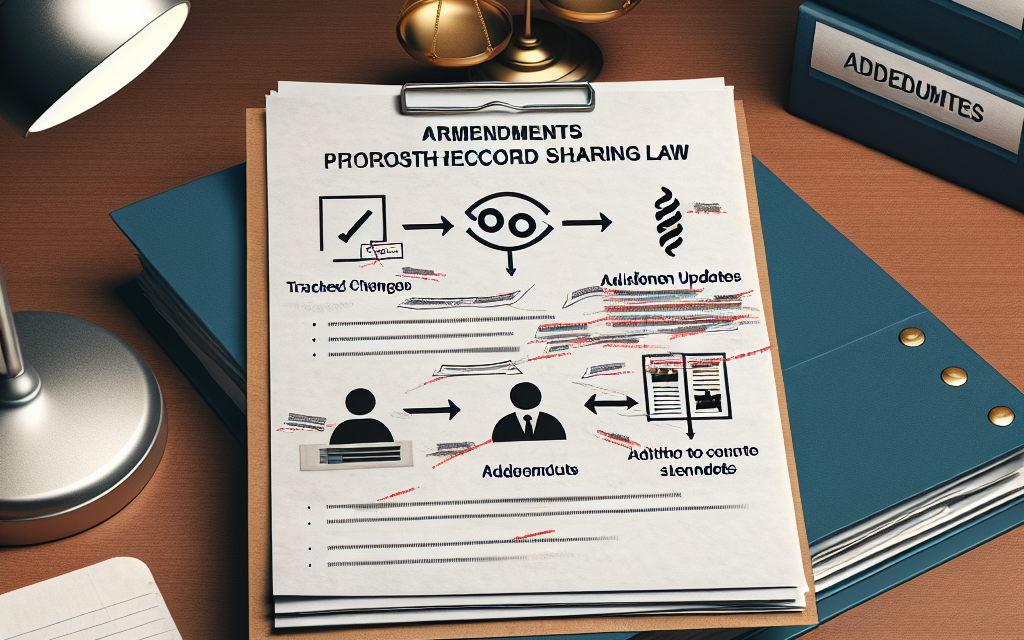Proposed Changes to My Health Record Sharing Law and Other Updates

The My Health Record system in Australia has been a topic of significant debate and discussion since its inception. As a digital health record system, it aims to provide a comprehensive and accessible repository of health information for individuals and healthcare providers. However, the system has faced criticism and calls for reform, particularly concerning data privacy and sharing laws. This article delves into the proposed changes to the My Health Record sharing law, exploring the implications, benefits, and challenges associated with these updates. We will also examine other recent developments in the system, providing a comprehensive overview of the current landscape.
Understanding My Health Record: An Overview
My Health Record is an Australian government initiative designed to create a digital summary of an individual’s key health information. This system allows healthcare providers to access and share patient information, facilitating better coordination and continuity of care. However, the system’s implementation has not been without controversy, particularly regarding privacy concerns and data security.
Initially launched as an opt-in system, My Health Record transitioned to an opt-out model in 2018, meaning that all Australians automatically have a record unless they choose to opt out. This shift raised significant privacy concerns, as many individuals were unaware of the change and the implications for their personal health data.
Despite these concerns, My Health Record offers several potential benefits, including improved healthcare outcomes through better information sharing, reduced duplication of tests and procedures, and enhanced patient safety. However, the system’s success hinges on robust data protection measures and clear guidelines for data sharing.
- Improved healthcare outcomes through better information sharing
- Reduced duplication of tests and procedures
- Enhanced patient safety
Proposed Changes to Data Sharing Laws
The proposed changes to My Health Record’s data sharing laws aim to address privacy concerns while enhancing the system’s utility for healthcare providers and patients. These changes focus on several key areas, including consent, data access, and security measures.
One of the primary proposed changes is the introduction of more stringent consent requirements for data sharing. Under the current system, healthcare providers can access a patient’s My Health Record without explicit consent in certain circumstances. The proposed changes would require explicit consent from patients before their data can be shared, except in emergencies or when required by law.
Another significant change is the introduction of stricter access controls for healthcare providers. The proposed updates would require healthcare organizations to implement robust access controls, ensuring that only authorized personnel can access patient records. This measure aims to prevent unauthorized access and misuse of sensitive health information.
Additionally, the proposed changes include enhanced security measures to protect patient data from cyber threats. These measures would require healthcare organizations to implement advanced cybersecurity protocols, including encryption and regular security audits, to safeguard patient information.
- Introduction of more stringent consent requirements
- Stricter access controls for healthcare providers
- Enhanced security measures to protect patient data
Implications for Healthcare Providers and Patients
The proposed changes to My Health Record’s data sharing laws have significant implications for both healthcare providers and patients. For healthcare providers, the changes necessitate adjustments to current practices and systems to comply with the new requirements.
Healthcare providers will need to invest in training and resources to ensure that staff understand and adhere to the new consent and access control requirements. This may involve updating existing systems and processes, as well as implementing new technologies to support compliance.
For patients, the proposed changes offer increased control over their health information and greater assurance of data privacy. By requiring explicit consent for data sharing, patients can make informed decisions about who can access their health records and for what purposes.
However, the changes may also present challenges for patients, particularly those who are less familiar with digital technologies or who have limited access to digital resources. Ensuring that all patients can easily navigate the system and exercise their rights will be crucial to the success of the proposed changes.
- Increased control over health information for patients
- Greater assurance of data privacy
- Challenges for patients with limited digital literacy
Case Studies: Lessons from Other Countries
To better understand the potential impact of the proposed changes to My Health Record, it is helpful to examine similar initiatives in other countries. Several nations have implemented digital health record systems with varying degrees of success, offering valuable lessons for Australia.
In the United Kingdom, the National Health Service (NHS) has faced challenges with its digital health record system, particularly concerning data privacy and security. The NHS has implemented several measures to address these issues, including robust consent protocols and enhanced cybersecurity measures. These efforts have improved patient trust and engagement with the system.
Similarly, in Estonia, the e-Health system has been lauded for its success in integrating digital health records into the healthcare system. Estonia’s approach emphasizes transparency and patient control, with patients able to access and manage their health information through a secure online portal. This model has resulted in high levels of patient satisfaction and trust.
These case studies highlight the importance of robust data protection measures and patient engagement in the success of digital health record systems. By learning from these examples, Australia can implement effective strategies to enhance the My Health Record system and address privacy concerns.
- United Kingdom’s NHS: Improved patient trust through robust consent protocols
- Estonia’s e-Health system: High patient satisfaction through transparency and control
Future Directions and Conclusion
The proposed changes to My Health Record’s data sharing laws represent a significant step towards addressing privacy concerns and enhancing the system’s utility for healthcare providers and patients. By implementing more stringent consent requirements, stricter access controls, and enhanced security measures, the changes aim to build trust and confidence in the system.
However, the success of these changes will depend on effective implementation and ongoing engagement with stakeholders, including healthcare providers, patients, and policymakers. Ensuring that all parties understand and adhere to the new requirements will be crucial to achieving the desired outcomes.
Looking ahead, the My Health Record system has the potential to transform healthcare delivery in Australia by facilitating better information sharing and coordination of care. By addressing privacy concerns and enhancing data protection measures, the system can achieve its full potential and deliver significant benefits to patients and healthcare providers alike.
In conclusion, the proposed changes to My Health Record’s data sharing laws and other updates represent a positive step towards improving the system’s effectiveness and addressing privacy concerns. By learning from international examples and engaging with stakeholders, Australia can implement a digital health record system that meets the needs of all Australians and supports better healthcare outcomes.





